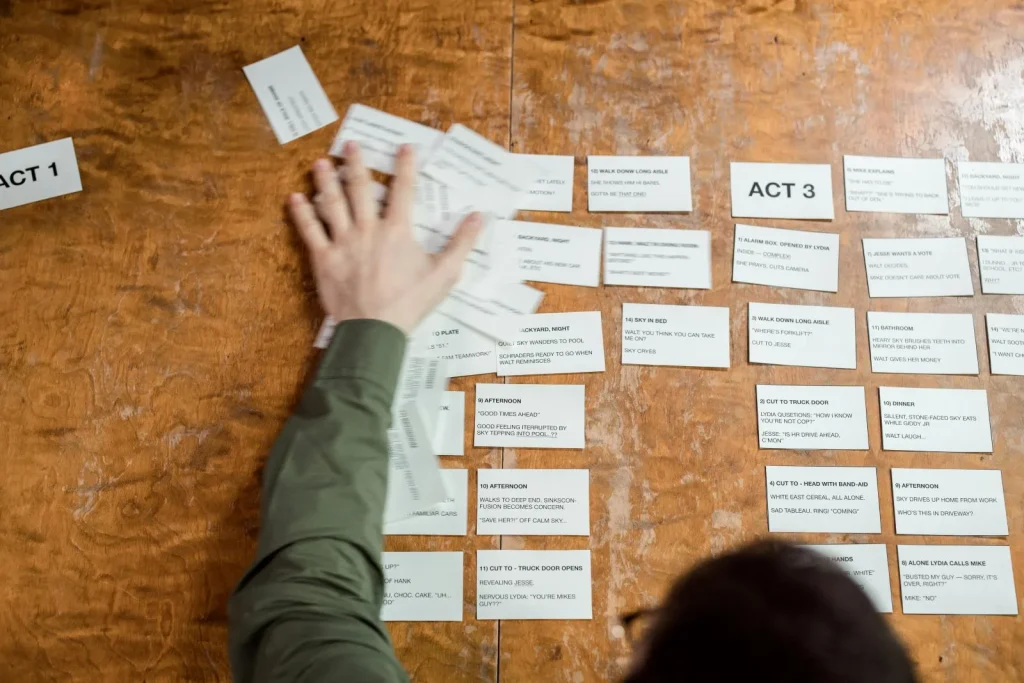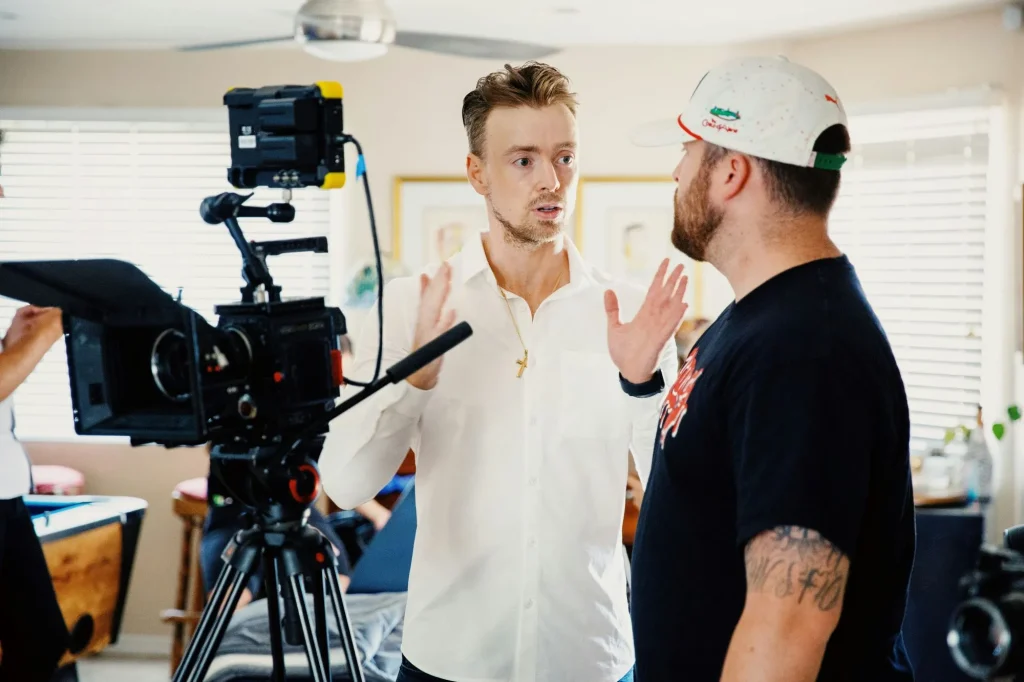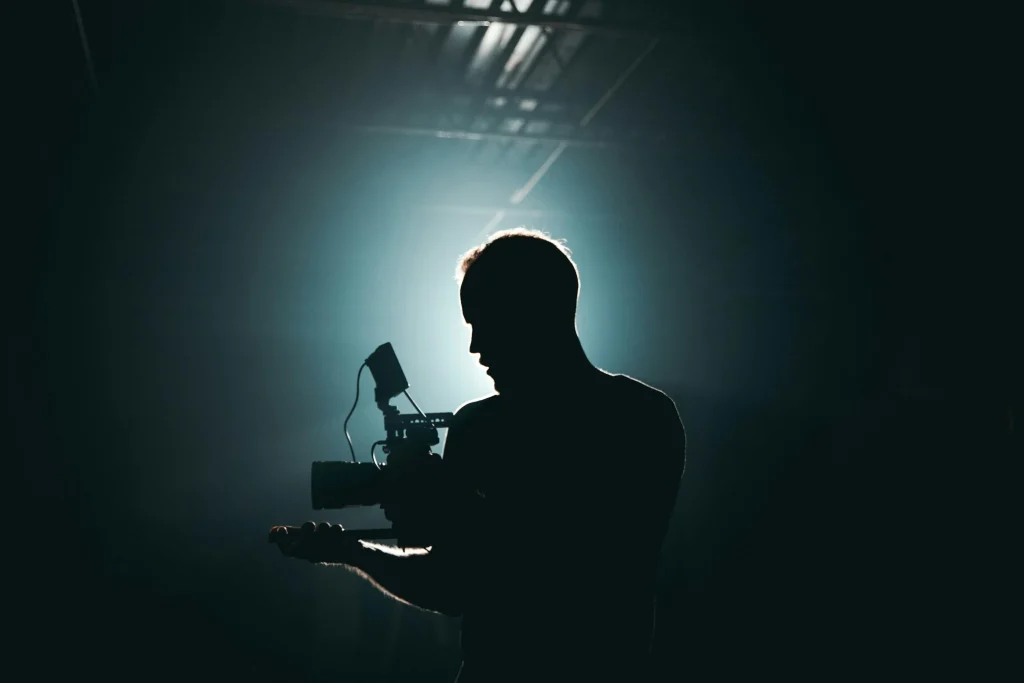Making movies can be a complex process, especially with large commercial projects. It requires expertise, video production technology know-how, different tools, equipment, and more. However, both professional and indie filmmakers will go through the same stages of video production, regardless of their budget and crew size.
The process can be split into three stages: pre-production, production, and post-production. These are the planning phase, the shooting phase, and the editing phase.
In this article, we will cover all the stages of professional video production that fall under these three to help you organize your next project. If you want to simplify the planning phase, you can always use this guide to create a checklist to follow. So, let’s start with the first and most important one.
Stage 1. Initial Planning
The first stage of movie production is pre-production. It includes everything related to planning and setting timelines before the shooting starts. Finding the cast and crew, planning the budget, and renting equipment all fall under this umbrella.
It is not rare for pre-production to last a couple of months since there are so many things to cover. Depending on the type and length of the movie you will be making, you might need to spend three to six months in the planning phase.
Many films get stuck in the pre-production phase, and it is often called “development hell.” It is common for movies to never reach the next step of the video production process due to issues with funding, licensing, etc. So plan everything accordingly.
Stage 2. Scripting and Storyboarding
The first step towards making a great movie is having a story. Your script needs to be as polished as possible before you are ready to make further plans. In some cases, directors will also create movie storyboards.
These help organize each shot, position the camera, and allow other team members to understand the idea even better. Without a finished script, you might be forced to change plans mid-way through the shooting, which will only further delay it.
Stage 3. Scouting Locations
If you are making a live-action movie, you will have to decide where to shoot scenes. Some parts might be recorded in a studio, but you’ll also have scenes that take place outside. And that is why you need to start thinking about locations early.
Getting the necessary permissions and organizing filming at various locations is not as easy as it sounds. In fact, many unexpected issues may arise. You will also need to prepare thoroughly for any challenges outdoor filming comes with. For example, will you be needing reflectors? How will you position lights and microphones? Where will the cameras be? There are so many questions to answer if you are looking to prepare properly for the shooting phase.
Stage 4. Cast and Crew
Many people are involved in the filmmaking process. And during this step, you’ll need to find everyone you’ll need to complete the production.
Makeup artists, costume department, camera operators, production designers but also all the actors who will be the main stars of the show. Of course, not every director is fortunate enough to be able to hire anyone they like, which leads us to the next step.
Stage 5. Budgeting
The budget for the movie will play a significant role in your choices. With a higher budget, you can hire better actors, more experienced crew members, and book incredible locations. But there is no doubt that you will have to make a few compromises.
Budgeting is an important element of pre-production, and planning everything from the get-go will help you immensely. That way, you can dedicate a portion of the budget to each stage of video production.
Stage 6. Filming
The production stage is the main part of the production process of a film. During it, you will capture the necessary footage for each scene. If we are talking about live-action movies, you will film all the scenes on your camera. Otherwise, the production stage might refer to animation or voiceovers too.
With proper planning, the production phase can last between five and eight weeks. Naturally, the genre and the complexity of scenes will play an important role in the stage’s length. Furthermore, the more time you spend ensuring each scene is polished, the less time you will spend “fixing” everything in video post-production.
The shooting phase of big-budget movies can often take even longer, especially blockbusters. They can spend up to four months in it. If you are creating an animated movie, though, the animation will be the main part of this stage. Once everything is recorded, you can proceed to editing and post-production.
Stage 7. Organizing Footage and Post-Production Preparations
Post-production is the final of the three big stages of video production, and it is the longest one. Once again, depending on the genre, post-production can take a couple of months to a year.
During this stage, editors will piece the scenes together since they are often shot out of order, they will trim unnecessary parts, composers will create music, the VFX team will work on special effects, and more. Even though filming is complete, there is still much work to be done.
The preparation process will include organizing footage, assigning tasks to your teams, and getting ready for the editing stage.
Stage 8. Editing
During the editing phase, editors will stitch together scenes in order and work on creating the first rough cut. They will remove any unnecessary scenes and trim others to improve the flow of the movie.
They will also mark all the scenes that require further improvements, and the rough cut will start taking shape. Generally speaking, each movie films more scenes than needed. As a result, the product of this stage will be significantly longer compared to the theatrical version audiences can see in cinemas.
Reviewing the rough cut will give the director an idea of what to expect and how to further improve flow.
Stage 9. Color Correction
The primary goal of color correction and color grading is to create a unified look for the film when all scenes are mixed. Since each scene will have different lighting based on where it was shot, the team will need to adjust them to match each other.
Many directors also have a distinct style and color palette they use, making each scene easily recognizable. It all comes down to your ideas and what you’re trying to achieve, but the goal is to make all scenes look unified and coherent throughout the film.
Stage 10. Audio Mixing
Audio mixing and audio post-production are an essential part of the editing process. That includes all the dialogues, foley sounds, music, and everything else your audience will hear during the movie.
Music plays an essential role in any motion picture, and an iconic theme can sometimes even outshine the movie itself.
You will also edit and fix dialogue in this video production stage, so you might even need to re-record some parts if necessary. These second takes are usually done in the studio to ensure there is no background noise.
Stage 11. Special Effects
It is difficult to imagine movies today without special effects. A huge portion of time and the budget will go into VFX, and it’s one of the most important elements of post-production. Of course, the film’s genre will determine how complex your effects need to be.
Historical dramas might use VFX to add crowds of people, snow, or backgrounds. But science fiction movies will require so much more. On the other hand, documentaries probably won’t need many (if any) special effects. Either way, you’ll need to plan with this stage in mind most of the time.
Stage 12. ADR
ADR or automated dialogue replacement is a process of replacing dialogues that are unusable in the original recording. Maybe the location was too crowded or there was a constant background noise during the scene. This means the actors will return to the studio and record dialogues while watching the scene to replicate the emotion as closely as possible.
Many viewers are unaware of how common this practice is. Especially during action scenes where there are so many things happening at once. It is impossible to capture subtle sounds like the main actor being out of breath in a chase sequence. The actor will need to re-record the audio separately.
Stage 13. Reshoots
While directors will record multiple takes of each scene, and they will redo it if something goes wrong, it is not uncommon that none of the scenes look good on the big screen during early reviews. In these cases, they will need to reshoot the scene if it is crucial for the plot and flow of the movie.
The director, cast, and crew will return to the scene and try to recreate the scene a second time. There are cases when only a handful of scenes need to be remade, but sometimes, the extent of reshooting can be significant. Especially if there are changes in the script mid-way through.
That is one of many reasons you should start shooting only when you have the script finished.
A Professional Post-Production Team at Your Fingertips
Completing each stage of video production requires expertise, and post-production requires it the most. Instead of spending months building a team yourself, why not work with professionals with a proven track record?
Our team at Force Media has over a decade of post-production experience on various projects, including films, anime, music events, and much more. We can handle all of your post-production needs, including:
- ADR
- Subtitling
- Editing
- Color correction
- Color grading
- VFX
- Music scoring
- And more…
Why not give us a call and tell us more about your project? We’d love to have a chat and see how we can help you!


